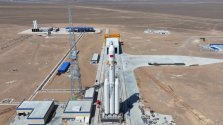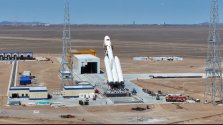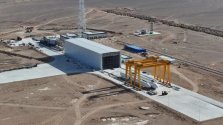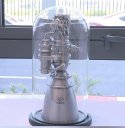You are using an out of date browser. It may not display this or other websites correctly.
You should upgrade or use an alternative browser.
You should upgrade or use an alternative browser.
China's Space Program Thread II
- Thread starter Blitzo
- Start date
by78
General
Taikonaut Chen Dong has surpassed Ye Guangfu in total time in orbit.
Chen Dong has become the first Chinese taikonaut to accumulate 400 days in space.


The only chinese astronaut currently in the all time top 50 of time spent in space (Ye Gangfu was briefly in it too, but not anymore)Chen Dong has become the first Chinese taikonaut to accumulate 400 days in space.


If CMSA actually does send one or two astronaut for a year long mission on Shenzhou 22 to handle the Pakistani astronaut (on SZ-23), then that record should be surpassed next year, and depending on which one, they could enter the all time top 20 or even 10.
Anyway if you wanna guess who's gonna fly on SZ-21 based on blurry pictures:


Anhui Truchum talks about its involvement in China's space program here. Especially interesting is its composites product in next generation space vehicle or space plane.3、江苏天鸟在手订单、交付情况及验收进度变化如何?
回复:子公司天鸟高新作为国家航空航天重大工程配套核心单位、国际航空器材承制方 A 类供应商,天鸟高新深耕高性能碳纤维预制体领域二十余年,已形成覆盖航天固体火箭发动机喷管喉衬、防热结构、透波材料等关键部件的全系列预制体产品体系。公司打破国外垄断,不仅承担了国内几乎全系列航天固体火箭发动机喷管喉衬纤维预制体的研发与产业化供应,更在“天宫一号”“神舟飞船”“天舟六号”“长征系列火箭”等国家重大航天任务中提供关键材料支撑,其产品与军工体系深度协同,在国防需求持续放量的背景下,军工业务积极响应国防需求并有序推进。
今年以来,天鸟高新生产任务饱满,工厂生产线满负荷运转,公司通过扩产、增员、延长工时等方式保障军工订单交付,产能利用率持续拉满。十四五期间,天鸟高新重点关注航天航空先进材料发展方向,坚持自主创新,研制成功了高性能纤维预制体数字化多层联立体编织及装备,以及大尺度复杂结构密度梯度预制体编织等技术及自动化装备,研制生产的预制体产品配套应用于新一代航天飞行器复合材料舱体组件,为空天复合材料高性能纤维预制体产业化项目顺利实施奠定了坚实基础。公司已启动 3 亿元空天复合材料预制体产业化项目,预计达产后年产值 6 亿元,将进一步缓解当前产能压力。
High-resolution images from the launch of Gaofen-14 02 remote sensing satellite, which was carried out by a Long March 3B rocket. This was the 603rd flight of the Long March series.





Another SSO in the Gaofen series, predictions on its probable lifespan and resolution?







